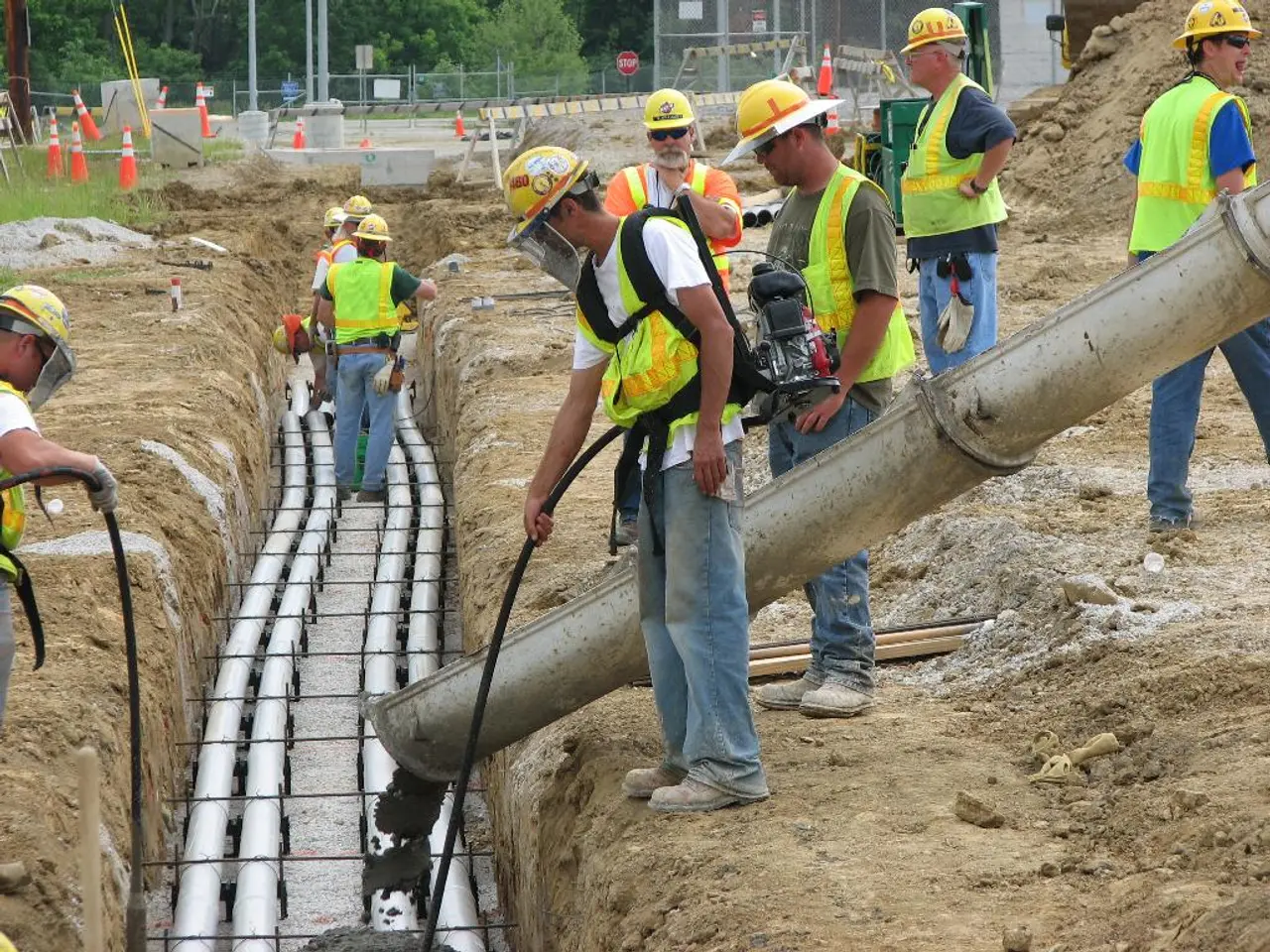Construction teams have yet to commence repairs on unsafe buildings regarding external cladding, according to recent findings
The UK government's efforts to address unsafe cladding on high-rise and mid-rise buildings, following the tragic Grenfell fire incident, have been underway for some time. However, progress has been slower than expected, leaving thousands of buildings still in need of remediation.
As of mid-2025, approximately 44-46% of the identified 3,839 dangerous buildings have started remediation work. This figure includes social housing, private residential buildings, and other structures. The government's Remediation Acceleration Plan, announced in 2022, aims to expedite this process with clear deadlines and tougher penalties.
The plan targets the most unsafe high-rise private residential buildings, particularly those with Aluminium Composite Material (ACM) cladding, for remediation by March 2025. Government-funded schemes for social housing are expected to be in place by the end of 2025.
Responsibility for cladding repairs falls on several parties. Developers and contractors who installed defective cladding or failed in their building safety duties are increasingly held liable for remediation costs. Building owners and responsible entities identified by Homes England, especially under the Cladding Safety Scheme, also bear this responsibility. Social housing landlords and councils receive government funding to support cladding removal in public housing stock.
In addition, the building's freeholder or head leaseholder, a right to manage company formed by qualifying leaseholders, and a management company can also be responsible for cladding repairs. It's important to note that only one person or organisation can be legally held accountable for a building's external repair.
The industry is expected to contribute significantly to the cost of remediation. The Building Safety Levy, effective from October 2026, is expected to raise approximately £3 billion over the next 10 years from developers and contractors. This levy will be used to finance cladding repairs in addition to developers fixing their own buildings.
Despite these efforts, the total cost of cladding remediation has surpassed £16 billion. New regulations, including the Building Safety Levy, aim to place more financial responsibility on original developers and contractors rather than leaseholders. Legal rulings have reinforced that historic remediation costs for fire safety defects before the Building Safety Act 2022 cannot be charged to leaseholders.
In conclusion, while remediation efforts are accelerating with government backing and legal frameworks shifting liability away from leaseholders, significant work remains to fully address unsafe cladding on high-rise and mid-rise buildings across the UK. The government's Remediation Acceleration Plan is a crucial step towards ensuring the safety of all UK residents in these buildings.
[1] Department for Levelling Up, Housing and Communities (DLUHC) [2] Ministry of Housing, Communities and Local Government (MHCLG) [3] BBC News [4] The Guardian [5] The Independent
- The UK government's Remediation Acceleration Plan, announced in 2022, focuses on expediting the process of cladding remediation on high-rise private residential buildings, particularly those with Aluminium Composite Material (ACM) cladding, and expects government-funded schemes for social housing to be in place by the end of 2025, as part of the general-news and housing discussion.
- Despite the progress made in the remediation of dangerous buildings following the Grenfell fire incident, as of mid-2025, approximately 44-46% of the identified 3,839 buildings have started remediation work, with politics playing a significant role in the implementation of the Remediation Acceleration Plan and the introduction of the Building Safety Levy to raise funds for cladding repairs, as reported by various news outlets such as [1], [2], [3], [4], and [5].




